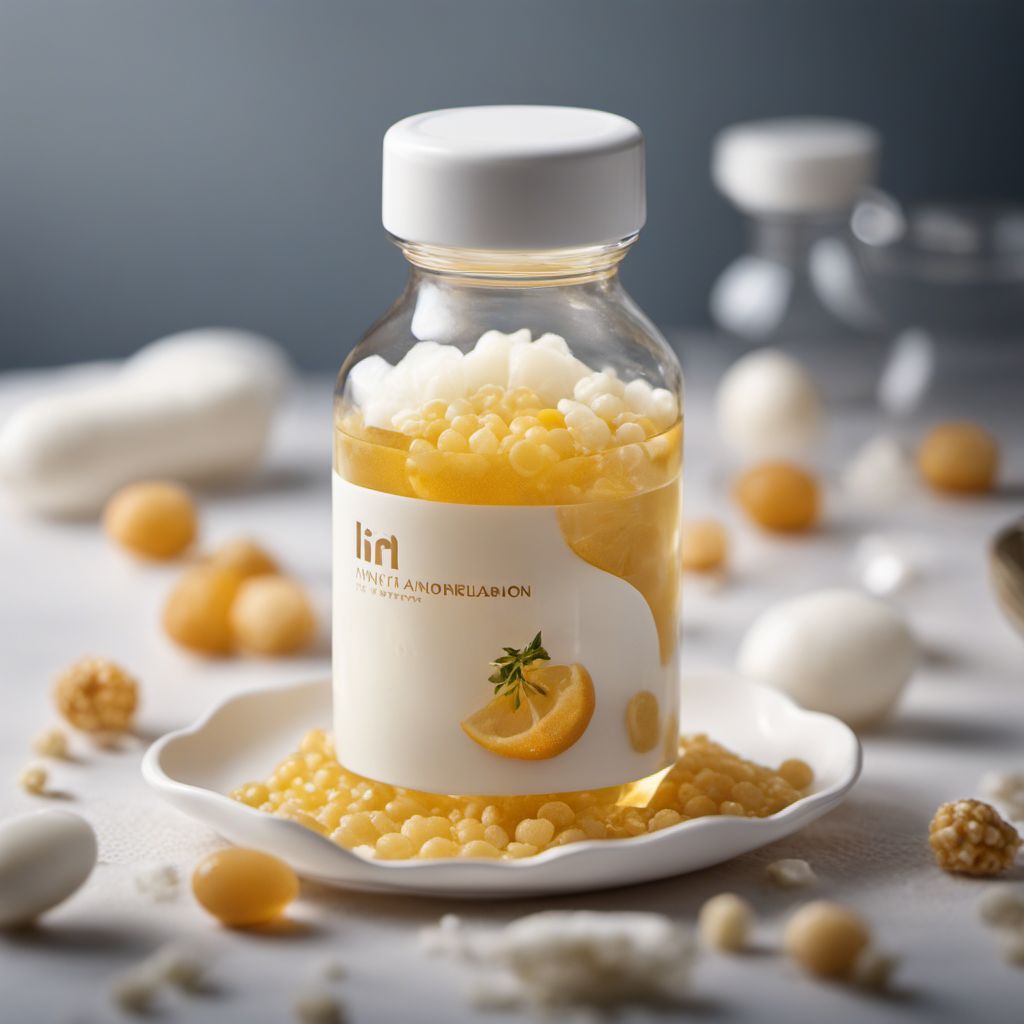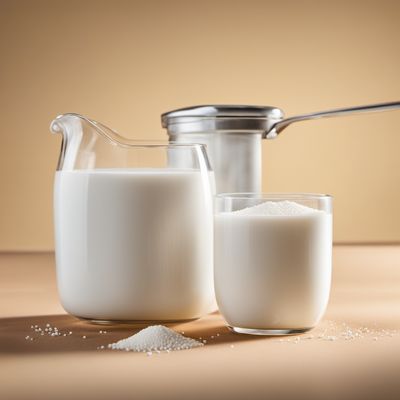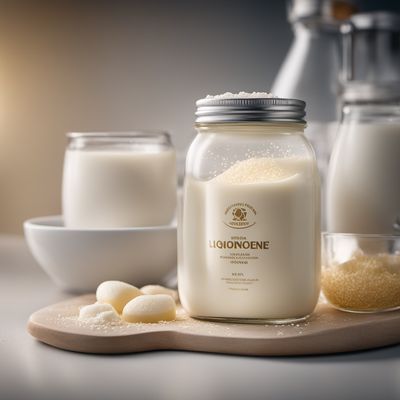
Ingredient
Infant formulae, liquid
Nourishing Liquid Nutrition for Babies
Infant formulae in liquid form are specially designed to provide complete nutrition for babies who are unable to breastfeed or need additional nourishment. They are made by combining various ingredients, such as proteins, carbohydrates, fats, vitamins, and minerals, in a balanced and easily digestible form. Liquid infant formulae offer convenience and accuracy in feeding, making them a reliable choice for parents and caregivers.
Origins and history
The development of infant formulae can be traced back to the late 19th century when scientists began researching alternatives to breast milk for infants who were unable to nurse. Over the years, advancements in nutritional science and technology have led to the creation of liquid infant formulae that closely resemble the composition of breast milk. Today, these formulas are widely used and recommended by healthcare professionals to support the healthy growth and development of infants.
Nutritional information
Liquid infant formulae provide essential nutrients, including proteins, carbohydrates, fats, vitamins, and minerals, necessary for the growth and development of babies. They are also fortified with additional nutrients like iron and DHA to support brain development. The nutritional content may vary depending on the specific brand and type of formula. It is important to follow the instructions provided by the manufacturer and consult with a healthcare professional for guidance on feeding.
Allergens
May contain allergens such as cow's milk or soy depending on the specific formula. Some formulas may also contain traces of other allergens due to manufacturing processes.
How to select
When selecting liquid infant formulae, it is crucial to choose products that are appropriate for the age and specific needs of the baby. Consult with a healthcare professional for guidance on the suitable formula type, whether it is cow's milk-based, soy-based, or specialized for specific conditions. Look for formulas that are well-sealed and within the expiration date. Follow the storage instructions provided by the manufacturer to ensure the quality and safety of the formula.
Storage recommendations
To maintain the freshness and quality of liquid infant formulae, store them in a cool and dry place, away from direct sunlight. Once opened, follow the instructions provided by the manufacturer regarding refrigeration and shelf life. Use clean utensils and bottles when handling the formula to prevent contamination.
How to produce
Liquid infant formulae are produced by specialized manufacturers under strict quality control standards. It is not recommended for amateurs to attempt producing infant formulae at home, as it requires precise formulation and sterile conditions to ensure safety and nutritional adequacy. It is best to rely on commercially available options that have undergone rigorous testing and meet regulatory standards.
Preparation tips
Liquid infant formulae are ready to use and can be fed directly to babies without the need for additional preparation. Follow the instructions provided by the manufacturer for proper feeding techniques and quantities. It is important to sterilize bottles and nipples before use to maintain hygiene. Consult with a healthcare professional for guidance on feeding schedules and transitioning to solid foods.
Culinary uses
Liquid infant formulae are primarily used as a substitute for breast milk when breastfeeding is not possible or insufficient. They are commonly used by parents and caregivers to provide complete nutrition to infants during the first months of life. Liquid formulae can be fed directly to babies or used in combination with breastfeeding. They are also used in healthcare settings, such as hospitals and neonatal units, to support the nutritional needs of newborns.
Availability
Liquid infant formulae are widely available in pharmacies, supermarkets, and online retailers. They can be found in various brands and formulations, catering to different age groups and specific dietary requirements. Availability may vary depending on the region and demand.
More ingredients from this category

Infant formula, soya-based, liquid
Soy-Based Nourishment for Little Ones

Infant formula, milk and soya-based, liquid
Nourishing Liquid for Little Ones

Infant formula, milk-based, liquid
Nourishing Liquid for Little Ones

Infant formula, based on protein hydrolysates, liquid
Nourishing Liquid Gold for Little Ones